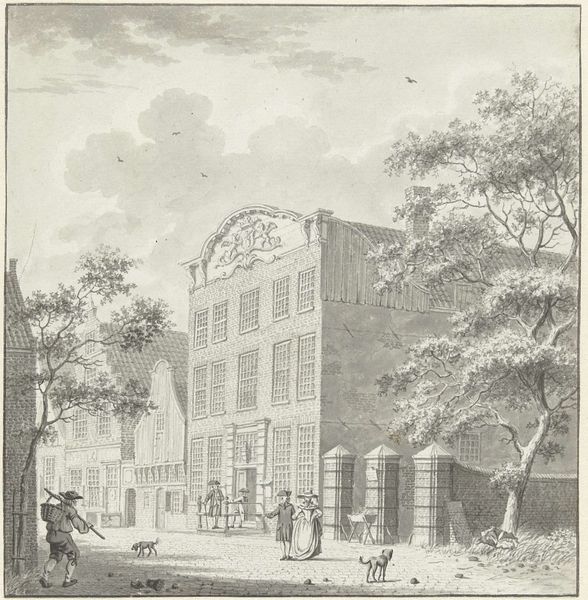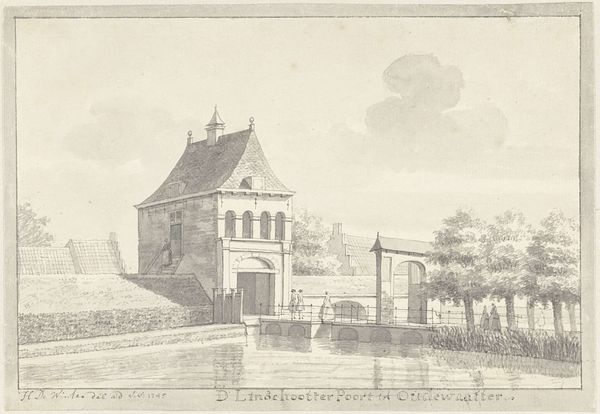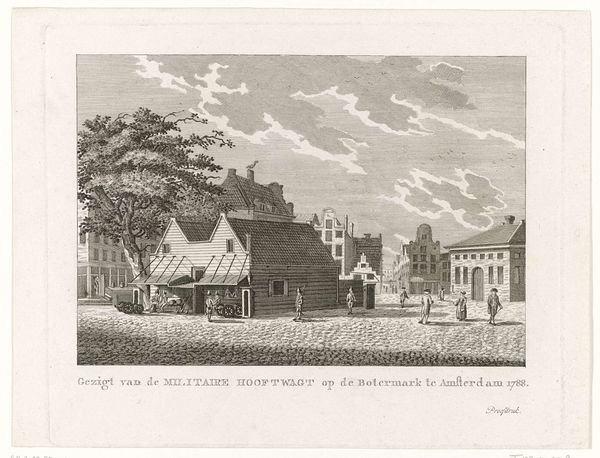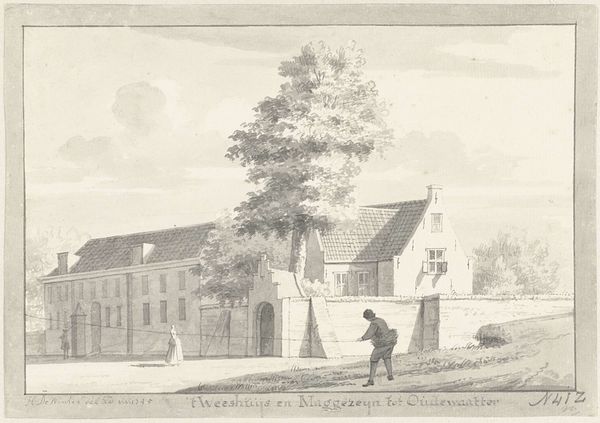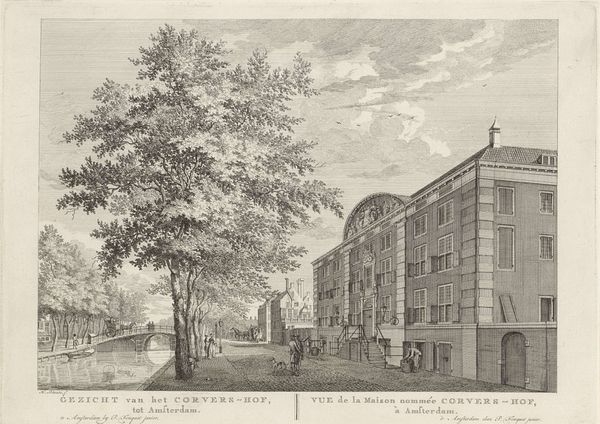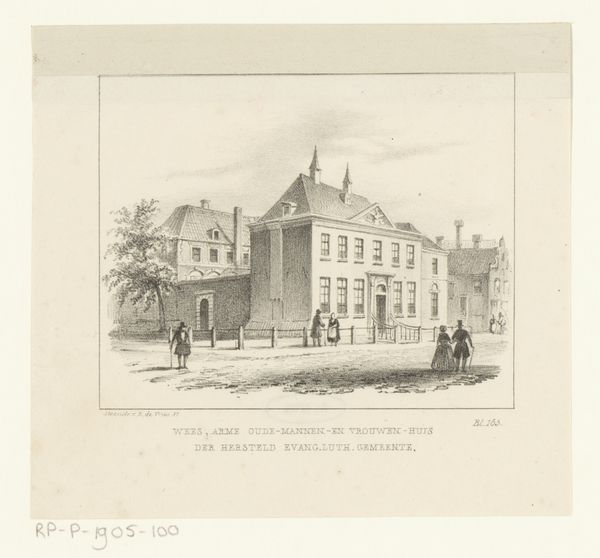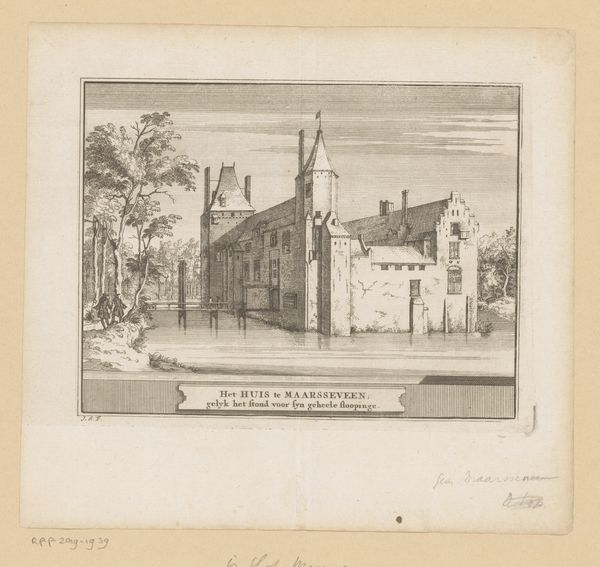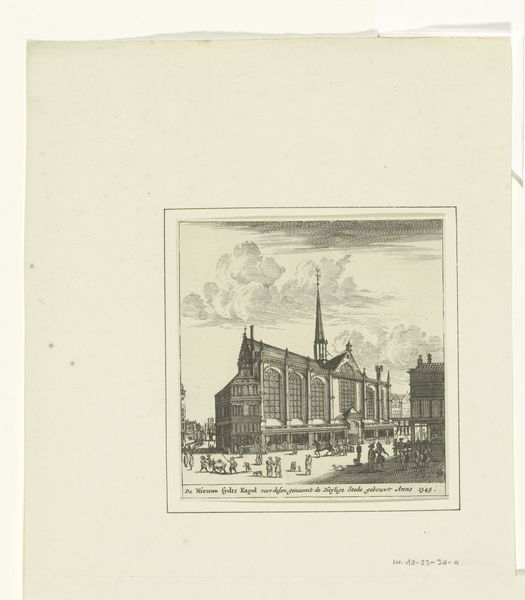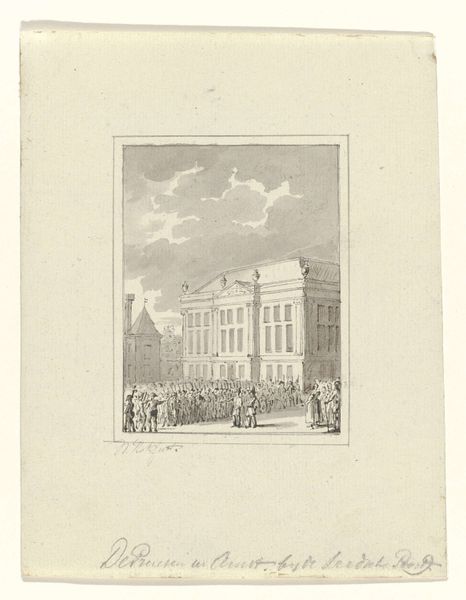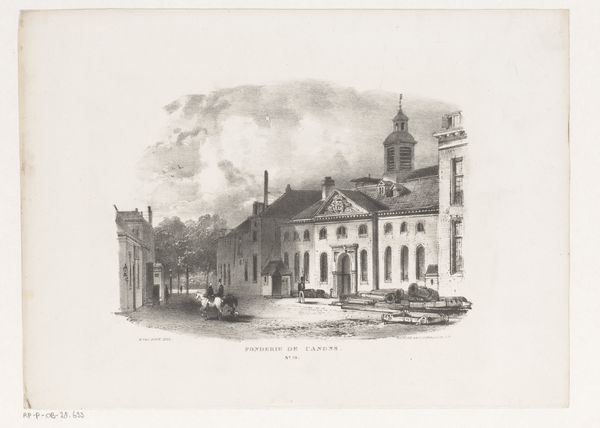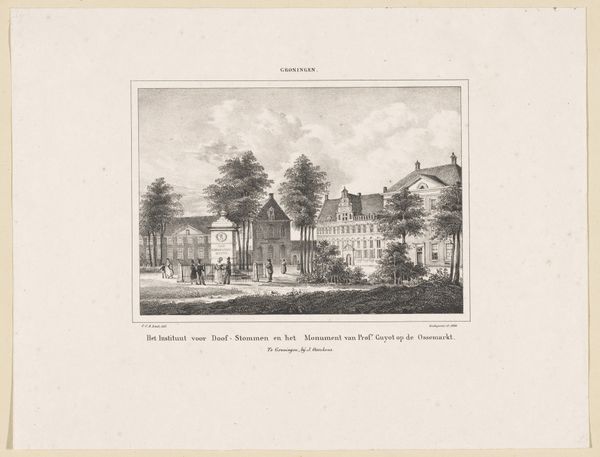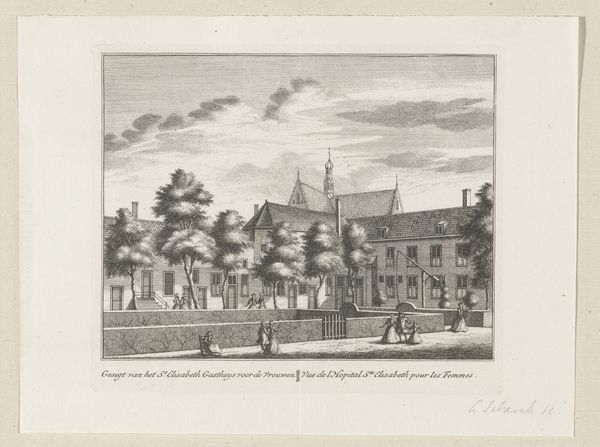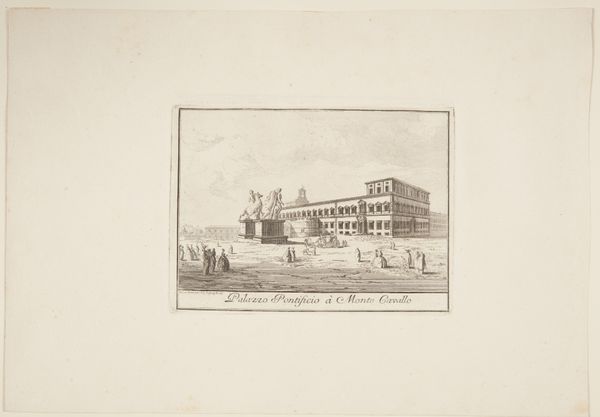
print, etching, engraving
#
dutch-golden-age
# print
#
etching
#
old engraving style
#
historical photography
#
cityscape
#
engraving
Dimensions: height 186 mm, width 237 mm
Copyright: Rijks Museum: Open Domain
Editor: Here we have Jacobus Wijsman's "Wachthuis bij de Jan Roodenpoortstoren te Amsterdam, 1787," an etching from 1790. It reminds me of a carefully constructed stage set, almost like a miniature model of a bustling urban scene. What draws your eye to this piece? Curator: My focus immediately goes to the materials themselves and the processes of production. This etching, with its precise lines, tells a story about the labor involved – the engraver meticulously transferring an image onto a copper plate. Consider the social context: prints like these made city views accessible to a broader public. Editor: That's interesting! So, it's not just about the building itself, but the act of creating and distributing this image? Curator: Precisely. The print becomes a commodity, subject to the same forces of production and consumption that shaped the city itself. How does the uniformity of the etching process contrast with the implied activity within the scene itself? Editor: The regularity of the etching feels at odds with the 'snapshot' of the moment being portrayed! Are those even flags stacked outside? What would have motivated those, and where the artist/engraver placed them in this specific composition? Curator: That contrast is key! Also, those flags indicate a level of organization in a seemingly routine activity. By focusing on these details – the materiality of the print and the activity depicted within, we gain insight into the economic and social structures of the time. This kind of image democratized art as the everyday person could see how the elite lived and spent their days. Editor: I hadn't considered the implications of mass-produced imagery in this context before! I was very fixated on the building portrayed. It reframes my view of historical art when we see these less traditional details included within the work. Curator: Exactly! We can learn about a time period by understanding labor practices, art as commodities, and how these artworks were available for commoners to view. I feel it adds a necessary understanding to just viewing artworks from the past by only a visually-pleasing stance.
Comments
No comments
Be the first to comment and join the conversation on the ultimate creative platform.
